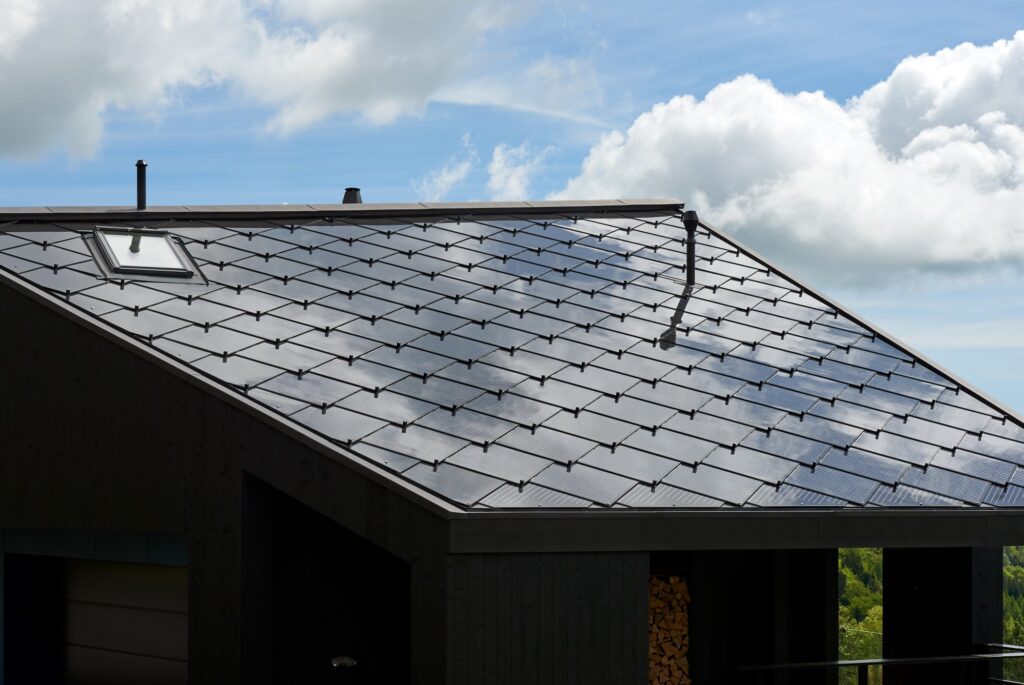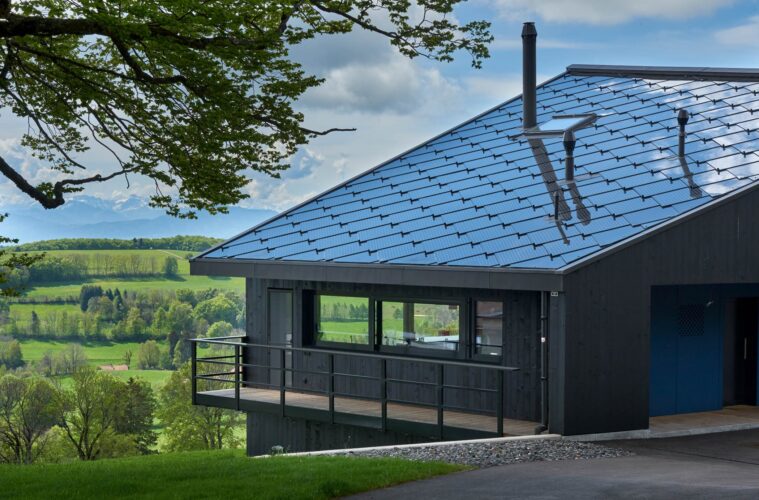Martin Ulmann, marketing manager at solar roof providers, SunStyle, explains why anti-glare solar panels are essential for modern buildings and reveals how incorporating them at the design stage can reduce potential hurdles for project managers.
Solar glare was an overlooked issue in past generations of solar technology, despite it causing disruptions to surrounding neighbourhoods and infrastructure. Homeowners and city planners are increasingly seeking solutions that are compliant with regulations that limit solar glare, while maintaining efficiency.
Due to the reflective nature of the glass material on solar panels, during direct sunlight an intense, mirror-like reflection known as solar glare can be observed. The German glare guidance, published in conjunction with the Federal Immission Control Act declares 30 minutes of exposure on any given day as a “significant nuisance.”
Local and national solar glare restrictions have therefore been put in place to prevent disruptions to neighbours, transport and wildlife. This means for some projects, anti-glare is a necessary part of getting the design approved.

Why minimise reflections?
Whether it’s in built-up areas or mountainous regions, there is often a difference in elevation between buildings. Reflections from solar panels can cause problems for higher rise buildings or adjacent structures at higher levels of elevation.
This extends to property near important transport links like train stations and railway infrastructures or airports and low flight path areas. Here, building restrictions are commonly enforced by the government to reduce dangerous distractions for pilots and traffic controllers. The option of anti-glare solar panels can enable planners to build renewable energy generating projects in areas with easy access to transport links.
Reflections from solar panels can also disorient wildlife in a phenomenon called the “lake effect”. Studies show birds can misinterpret the polarised light reflected on solar panels, influencing their foraging decisions and impeding their ability to locate bodies of water.
Anti-glare solar panels minimise the impact on local ecosystems, while continuing to provide renewable energy. For environmentally conscious developers building in regions along migratory routes or near natural reserves, this provides a sustainable approach.
Anti-glare technology
While sometimes the glass itself is made of different materials or even etched to achieve a similar effect, using an anti-reflective coating is standard in many cases like windows and prescription glasses. A thin layer of transparent material with a specific refractive index is applied to the glass surface to minimise the portion of light bouncing off the reflective material.
For solar roof providers, SunStyle, staying true to the matte texture of a traditional slate roof is a key part of the commitment to providing solar energy without aesthetic compromise. With the antiglare solar tiles option, architects that are trying to add building-integrated photovoltaics (BIPV) to their projects can do so without worrying about reflections.
Planning early
While building restrictions against reflective solar panels are in place for valid reasons, it shouldn’t get in the way of generating renewable energy. Project planners should consider the possibility of anti-glare technology as early as the proposal and design stage to give sufficient time for preparations and to minimise the hurdles down the line.
This is especially the case for big projects, where the effect of solar glare is amplified — not being aware of building restrictions can stop an important project before it even starts. By incorporating anti-glare BIPV in the proposal, designers can show not only their commitment to a sustainable future, but also their consideration for the local area and increase their chances of being granted permission.


